A Comparison of Thermoset and Thermoplastic Materials
Plastics, as defined by DIN 7724, are categorized into various types based on their mechanical behavior. Among these types, thermoplastics and thermosets are the two primary classifications. These materials are artificially produced from raw materials such as petroleum and fall under the umbrella of organic substances due to their composition of organic carbon or silicon compounds.
Thermoplastics and thermosets possess distinctive characteristics and exhibit different behaviors. Thermoplastics have the ability to soften and melt when subjected to heat, and upon cooling, they solidify once again. This process can be repeated numerous times without affecting their chemical structure. Notable examples of thermoplastics include polyethylene, polypropylene, and polystyrene.
In contrast, thermoset materials undergo a chemical reaction when exposed to heat, resulting in a permanent alteration of their molecular structure. Once they undergo this curing process, they cannot be re-melted or reshaped. This irreversible transformation grants them improved mechanical properties and stability. Epoxy, polyester, and phenolic resins are common examples of thermoset materials.
In summary, while both thermoset and thermoplastic materials fall under the broader category of plastics, they differ significantly in their response to heat. Thermoplastics can be repeatedly melted and reshaped, whereas thermosets undergo a permanent change in their structure when heated, making them non-remoldable. Understanding these distinctions is crucial for selecting the appropriate material for various applications and manufacturing processes.
Thermoset vs. Thermoplastic: A Comparison
Thermosets and thermoplastics are two distinct categories of plastics with contrasting behaviors when exposed to heat. The key disparity between the two lies in their response to heating and reshaping. Thermoset materials solidify when heated but cannot be reshaped or reheated after their initial shaping, while thermoplastics can be reheated, reshaped, and cooled multiple times without undergoing deformation or chemical transformation.
The dissimilarity in physical and chemical properties also manifests in their melting points. Thermoplastic materials have relatively low melting points, allowing them to melt and flow when heated. In contrast, thermoset products can endure higher temperatures without compromising their structural integrity.
Below is an overview of the applications and uses of both thermoset and thermoplastic materials, along with a summary of their respective advantages and limitations:
Thermoset Materials: Thermoset materials possess exceptional durability, dimensional stability, and resistance to high temperatures. Once cured, they form a three-dimensional network structure that cannot be reversed by heating.
Some common applications of thermosets include:
- Composite materials for aerospace and automotive industries.
- Electrical and electronic components, such as circuit boards and insulators.
- Construction materials, including adhesives, coatings, and sealants. Advantages of thermosets:
- High strength and rigidity.
- Excellent chemical resistance.
- Heat resistance. Limitations of thermosets:
- Irreversible shaping process.
- Limited reusability and recycling options.
- Brittle and prone to cracking under stress.
Thermoplastic Materials: Thermoplastic materials have a linear or branched molecular structure that allows them to soften, melt, and solidify repeatedly when heated and cooled. They exhibit excellent ductility, flexibility, and processability.
Some common applications of thermoplastics include:
- Packaging materials, such as bottles, containers, and films.
- Automotive components, such as interior trims and bumpers.
- Consumer goods, including toys, appliances, and furniture. Advantages of thermoplastics:
- Ease of processing and shaping.
- Recycling and reusability.
- Wide range of mechanical properties. Limitations of thermoplastics:
- Lower heat resistance compared to thermosets.
- Potential for creep or deformation under prolonged stress.
- Less chemical resistance compared to some thermosets.
In conclusion, the choice between thermoset and thermoplastic materials depends on the specific requirements of the application. Thermosets excel in high-temperature and structural applications where irreversible shaping is acceptable, while thermoplastics offer versatility, recyclability, and ease of processing for various consumer and industrial products. Understanding the differences between these two categories is essential in selecting the most suitable material for each intended use.
What are thermosets?
Thermosets, also known as thermosetting plastics or resins, are a class of polymer materials that undergo a chemical reaction when cured or heated, resulting in a permanently rigid and insoluble state. Unlike thermoplastics, which can be melted and reshaped multiple times, thermosets undergo a cross-linking process during curing, creating strong, three-dimensional networks that cannot be reversed by reheating.
The curing process of thermosets involves the addition of a curing agent, such as a catalyst or a heat source, which initiates a chemical reaction. This reaction causes the polymer chains to cross-link, forming a solid and highly durable material. Once cured, thermosets cannot be melted or reprocessed without degradation or loss of their original properties.
One of the key advantages of thermosets is their exceptional heat resistance and dimensional stability. They can withstand high temperatures without softening or deforming, making them suitable for applications that require heat resistance, such as electrical insulation, automotive parts, and aerospace components. Thermosets also exhibit excellent chemical resistance, making them ideal for use in corrosive environments.
Common examples of thermosets include epoxy resins, phenolic resins, polyurethane, and melamine formaldehyde. These materials find applications in various industries, including construction, electronics, automotive, aerospace, and consumer goods.
While thermosets offer superior mechanical and chemical properties, it is important to note that they have limitations as well. Once cured, they cannot be reprocessed or reshaped, limiting their recyclability and repairability. Additionally, the curing process typically requires specific conditions, such as controlled temperatures and curing times, which can increase production time and cost compared to thermoplastics.
In summary, thermosets are a specialized class of polymer materials that undergo a permanent cross-linking process when cured or heated. They offer excellent heat and chemical resistance, making them suitable for demanding applications. However, their irreversible nature and limited reprocessing capabilities should be considered when selecting them for specific manufacturing needs.
what is the difference between thermoplastics and thermosets?
The main difference between thermoplastics and thermosets lies in their response to heat.
Thermoplastics can be melted and reshaped multiple times when heated and solidify upon cooling without undergoing any chemical change. This property allows them to be easily molded and recycled. When exposed to high temperatures, thermoplastics soften and become pliable, enabling them to be formed into different shapes. Examples of thermoplastics include polyethylene, polypropylene, and polystyrene.
In contrast, thermosets undergo a chemical curing process when heated, resulting in a permanent change in their molecular structure. Once cured, they cannot be melted or reshaped by applying heat. This irreversibility gives thermosets enhanced mechanical properties and dimensional stability, making them highly suitable for applications that require heat resistance, chemical resistance, and excellent strength. Examples of thermosets include epoxy resins, phenolic resins, and polyurethane.
To use the analogy of hard-boiled eggs, thermosets are similar to the cooked eggs that solidify and retain their shape when subjected to heat, while thermoplastics are like raw eggs that can be melted and reshaped repeatedly when heated.
Thermosets are particularly advantageous in applications where high temperatures, corrosive environments, and dimensional stability are critical, such as in electrical insulation, automotive components, and aerospace structures. Their resistance to heat, corrosion, and mechanical creep makes them well-suited for use in demanding environments.
In summary, thermoplastics can be melted and reshaped multiple times, while thermosets undergo a permanent change in their molecular structure when heated, making them non-remoldable. Thermosets offer enhanced mechanical and chemical properties, making them suitable for applications requiring heat resistance and dimensional stability.
Here are some key applications and uses of thermosets:
- Automotive Industry: Thermosets are utilized in automotive components such as engine parts, electrical connectors, interior trims, and body panels. Their heat resistance, dimensional stability, and chemical resistance make them suitable for under-the-hood applications and exterior parts that require durability and resistance to harsh environments.
- Electrical and Electronics: Thermosets are widely used in electrical insulation, circuit boards, connectors, and encapsulation of electronic components. Their excellent electrical properties, flame resistance, and insulation capabilities make them essential in ensuring reliable and safe electrical systems.
- Appliances: Thermoset materials are found in household appliances like ovens, refrigerators, and washing machines. They offer resistance to heat, chemicals, and weathering, ensuring the longevity and performance of these appliances.
- Lighting Industry: Thermoset plastics are used for the production of light fixtures, sockets, and electrical enclosures in the lighting industry. Their electrical insulation properties, resistance to UV radiation, and dimensional stability contribute to the reliable and long-lasting performance of lighting products.
- Energy Sector: Thermoset composites play a crucial role in renewable energy applications, including wind turbine blades, solar panel frames, and electrical insulation for power transmission. Their high strength, fatigue resistance, and weatherability make them suitable for these demanding energy applications.
- Construction: Thermosets are utilized in various construction applications such as adhesives, sealants, coatings, and composites for infrastructure and building materials. Their chemical resistance, weatherability, and structural integrity contribute to the durability and performance of construction projects.
- Aerospace and Defense: Thermosets are used in the aerospace industry for aircraft interiors, radomes, insulation, and structural components. Their lightweight properties, fire resistance, and high strength-to-weight ratio make them valuable in this industry.
Overall, thermosets offer a range of benefits in terms of chemical resistance, thermal stability, structural integrity, and dimensional stability. Their applications span across multiple industries, providing solutions where other materials may not meet the required specifications.
Here are some key advantages of thermosets:
- Heat Resistance: One of the primary advantages of thermosets is their excellent heat resistance. Unlike thermoplastics, which soften and deform when exposed to high temperatures, thermosets retain their strength and shape even at elevated temperatures. This property allows them to withstand thermal stresses and makes them suitable for applications in high-temperature environments.
- Dimensional Stability: Thermosets exhibit excellent dimensional stability, meaning they maintain their shape and dimensions over a wide range of temperatures. This stability is crucial for applications where precise tolerances and dimensional accuracy are required. Unlike some thermoplastics that may experience dimensional changes with temperature variations, thermosets retain their stability and ensure consistent performance.
- Strength and Rigidity: Thermoset components possess high strength and rigidity, providing excellent mechanical properties. They can withstand heavy loads and exhibit minimal deformation under stress. This strength makes them suitable for applications that require durable and robust materials, such as automotive parts, electrical components, and structural elements.
- Chemical Resistance: Thermosets offer exceptional resistance to a wide range of chemicals, including acids, solvents, and oils. This chemical resistance makes them suitable for use in corrosive environments or applications where exposure to aggressive substances is a concern. They can maintain their structural integrity and performance even when exposed to harsh chemicals.
- Cost-Effective Replacement for Metals: Thermosets are often used as cost-effective replacements for metal components. They offer comparable or even superior performance to metals in terms of strength, heat resistance, and chemical resistance, while also providing the advantage of being lighter in weight. This weight reduction can result in cost savings, improved fuel efficiency (in automotive applications), and easier handling during manufacturing and assembly processes.
- Design Flexibility: Thermosets offer design flexibility, allowing for the creation of complex shapes and intricate details. They can be molded into various forms and sizes, enabling the production of custom components that meet specific application requirements. This flexibility in design opens up opportunities for innovative product development and customization.
In summary, thermoset plastics provide numerous advantages, including heat resistance, dimensional stability, strength, chemical resistance, and cost-effective replacements for metal components. These advantages contribute to their growing popularity in various industries and their suitability for applications where durability, reliability, and performance in demanding conditions are essential.
Here are the main disadvantages associated with the use of thermosets:
- Initial Viscosity and Burr Formation: Thermoset materials often have low initial viscosity, which can lead to the formation of burrs during the molding process. Burr formation requires additional post-processing and rework, increasing production time and cost.
- Thickness Requirements: Due to the lower tensile strength and ductility of thermosets compared to some other materials, parts made from thermosets often need to be thick-walled to meet the desired mechanical properties. This can result in increased material usage and weight.
- Durability and Consistency: The compounds used in thermosets are reactive systems, and their performance and durability can be influenced by the curing process. In batch processes, there can be variations and inconsistencies from batch to batch, leading to potential differences in material properties and performance.
- Tool Wear: High levels of certain fillers used in thermoset formulations can cause excessive wear on the molds and tooling used for processing. This can lead to increased maintenance costs and reduced tool lifespan.
- Crosslinking Control: The quality and properties of thermoset products depend on achieving the appropriate degree of crosslinking during the molding or curing cycle. If the crosslinking is insufficient or excessive, it can negatively impact the final product’s performance and properties.
It is worth noting that while thermosets have these disadvantages, they are not as pronounced as some of the challenges associated with thermoplastics. Nevertheless, these considerations should be taken into account when selecting thermosets for specific applications and during the manufacturing process to ensure optimal results.
Here is a list of common types of thermosets and thermoset materials used in the plastics processing industry:
- RIM Duroplast (Reaction Injection Molding Duroplast)
- RTM Duroplastics (Resin Transfer Molding Duroplastics) – typically glass fiber reinforced
- Epoxy resin (EP) – known for its good mechanical properties
- Unsaturated polyester resins (UP) – characterized by easy handling and cost-effectiveness
- Vinyl ester resin (VE) – offers high temperature stability
- Phenolic resins (PF) – known for their electrical insulation properties
- Polyimide resins (PI) – exhibit high temperature resistance
- Bismaleimide (BMI) – used in high-performance applications
- Fluoropolymers – such as polytetrafluoroethylene (PTFE) and polyvinylidene fluoride (PVDF) known for their excellent chemical resistance and low friction properties
- Melamine – used in applications requiring heat resistance and flame retardancy
- Silicone – known for its flexibility, temperature resistance, and electrical insulation properties
- Urea-formaldehyde – used in applications such as adhesives and molding compounds
It’s important to note that this is not an exhaustive list, and there are other types of thermosets and resins available with their unique properties and applications in the plastics industry. The selection of the appropriate thermoset material depends on the specific requirements of the application, including mechanical strength, chemical resistance, thermal stability, electrical properties, and cost considerations.
Here are some common processing methods used for duroplastics:
- Injection Molding: Duroplastics can be processed using injection molding. The material is heated to a liquid state and injected into a mold cavity under high pressure. Once injected, the material undergoes a curing process to harden and solidify the part. Injection molding is commonly used for producing complex-shaped components with high precision.
- Compression Molding: Compression molding is another method used for processing duroplastics. In this process, the material is placed in a heated mold cavity and compressed under high pressure. The heat and pressure facilitate the curing reaction, resulting in the formation of the final part. Compression molding is suitable for producing large, flat parts and components with intricate details.
- Injection Compression: Injection compression combines elements of both injection molding and compression molding. The material is injected into a partially open mold cavity and then compressed to distribute the material evenly and facilitate curing. This method allows for improved surface finish and reduced internal stresses in the final part.
- Transfer Molding: Transfer molding is a process where the material is first preheated in a separate chamber and then transferred into a closed mold cavity. The material is subjected to heat and pressure, allowing it to flow and conform to the mold shape. Transfer molding is commonly used for producing small to medium-sized parts with intricate features and excellent surface finish.
In addition to these processing methods, duroplastics can also be used in the form of Bulk Molding Compound (BMC) and Sheet Molding Compound (SMC). BMC consists of a mixture of chopped fibers, fillers, and resin, which is compression molded to produce parts. SMC, on the other hand, consists of resin-impregnated continuous fiber reinforcements in a sheet form, which is then compression molded into the desired shape.
Each processing method has its advantages and considerations, and the choice of method depends on factors such as part design, material properties, production volume, and cost considerations.
Some common examples of flowable thermosets include:
- Bakelite: Bakelite is a well-known flowable thermoset material that was one of the first synthetic plastics. It is composed of phenol formaldehyde resin and has excellent electrical insulating properties. Bakelite is often used in electrical and automotive applications.
- Phenolic Resins (PF): Phenolic resins are widely used flowable thermosets that offer good mechanical strength, heat resistance, and chemical resistance. They are used in a variety of applications such as electrical components, consumer goods, and laminates.
- Melamine Resin (MF): Melamine resin is a flowable thermoset material known for its heat resistance and scratch-resistant properties. It is commonly used in kitchenware, decorative laminates, and coatings.
- DAP (Diallyl Phthalate): DAP is a flowable thermoset material that exhibits excellent dimensional stability and resistance to chemicals. It is used in applications such as electrical connectors, circuit boards, and molded parts.
- Epoxy Resins (EP): Epoxy resins are versatile flowable thermosets that offer exceptional adhesion, mechanical strength, and chemical resistance. They are widely used in various industries, including aerospace, electronics, coatings, and composites.
- Urea Resins (UF): Urea resins are flowable thermosets that provide good hardness, scratch resistance, and resistance to moisture. They are commonly used in wood adhesives, laminates, and decorative surfaces.
- Unsaturated Polyesters (UP): Unsaturated polyesters are flowable thermosets that are commonly used in the production of fiberglass-reinforced composites. They offer good mechanical properties, corrosion resistance, and dimensional stability.
These flowable thermosets can be processed through various methods, including pressing, injection molding, and tableting. The choice of processing method depends on the specific material, part design, and intended application.
BMC (Bulk Molding Compound)
BMC (Bulk Molding Compound) is a type of glass fiber reinforced plastic that is commonly used in the manufacturing of various components. It consists of a mixture of resin, typically vinyl resin or polyester, and glass fibers, which provide reinforcement.
BMC offers several advantages due to its unique composition. It exhibits excellent mechanical properties, including high strength and stiffness, making it suitable for applications requiring structural integrity. Additionally, BMC has exceptional flame retardancy, with halogen-free formulations available, making it a desirable choice for fire-resistant applications. The material also possesses excellent electrical properties, particularly in terms of tracking resistance, which is crucial for applications involving electrical insulation.
Furthermore, BMC can be formulated to meet specific industry standards, such as the railway standard DIN EN 45545-2, which establishes fire safety requirements for materials used in railway vehicles.
One notable characteristic of BMC is its ability to minimize distortion during the molding process. By incorporating additives that compensate for shrinkage, BMC can produce components with very little or zero shrinkage, resulting in parts with precise dimensions and minimal post-molding adjustments.
Due to its combination of mechanical strength, flame retardancy, electrical properties, and low distortion, BMC finds applications in various industries, including automotive, electrical and electronics, construction, and consumer goods. It is commonly used to manufacture components such as electrical enclosures, automotive parts, switchgear, insulators, and appliance housings.
The versatility and advantageous properties of BMC make it a popular choice for producing high-quality, dimensionally stable, and flame-resistant components.
SMC (Sheet Molding Compound)
SMC (Sheet Molding Compound) is a type of dough-like molding compound used in the manufacturing of thermoset composite parts. It consists of a combination of thermoset resins, typically polyester or vinyl resin, and glass fibers.
SMC is produced in the form of large, flat sheets or mats. These mats are made by impregnating continuous glass fibers with the resin matrix, forming a layered structure. The resin matrix provides the bonding and curing properties, while the glass fibers contribute to the material’s strength and stiffness.
The SMC sheets are then cut into specific shapes and placed in a mold. The mold is closed, and heat and pressure are applied to initiate the curing process. The heat causes the resin to crosslink and harden, resulting in a rigid, durable composite part.
SMC offers several advantages in terms of its properties and processing. The combination of thermoset resins and glass fibers results in a material with excellent mechanical properties, including high strength, stiffness, and impact resistance. The presence of glass fibers also enhances the dimensional stability and heat resistance of the final product.
The dough-like consistency of SMC allows for easy handling and molding. It can be shaped into complex geometries and molded into various sizes and thicknesses. The material flows easily during the molding process, ensuring proper filling of the mold and allowing for the production of intricate details.
SMC is widely used in industries such as automotive, electrical and electronics, construction, and transportation. It is employed in the manufacturing of components such as vehicle body panels, electrical enclosures, structural supports, and appliance housings.
Overall, SMC offers a cost-effective solution for producing lightweight, high-strength composite parts with excellent dimensional stability and heat resistance. Its versatility and favorable properties make it a popular choice in various applications requiring durable and visually appealing components.
What are thermoplastics?
Thermoplastics are a type of plastic material known for their versatility and recyclability. They are formed by polymerizing monomers, which are small repeating units, into long chains or branches.
One distinguishing characteristic of thermoplastics is their behavior when exposed to heat. When heated, thermoplastic materials soften and become more fluid, allowing them to be easily molded or shaped. This property is attributed to the absence of strong chemical bonds between the polymer chains. As a result, thermoplastics can be heated, cooled, and reheated multiple times without undergoing significant degradation or chemical change.
Another important feature of thermoplastics is their recyclability. Since the polymer chains can be reversed and reformed without undergoing chemical bonding, thermoplastic materials can be melted and reshaped into new products. This ability to be recycled and reprocessed contributes to the sustainability and environmental benefits of thermoplastics.
There is a wide range of thermoplastic resins available, each offering specific performance characteristics. Common thermoplastic materials include polyethylene (PE), polyvinyl chloride (PVC), and nylon. These materials exhibit properties such as high strength, resistance to shrinkage, and a degree of flexibility. Thermoplastics can be employed in a variety of applications, ranging from low-stress uses like plastic bags to highly demanding applications requiring strong and durable mechanical components.
Overall, thermoplastics are widely utilized in various industries due to their versatility, ease of processing, recyclability, and range of performance properties. Their ability to be molded, reshaped, and recycled without losing their physical properties makes them a preferred choice for many applications.
Some common applications of thermoplastics include:
- Pipes and fittings: Thermoplastic materials like PVC (polyvinyl chloride), CPVC (chlorinated polyvinyl chloride), polypropylene, PVDF (polyvinylidene fluoride), and ABS (acrylonitrile butadiene styrene) are widely used for manufacturing pipes and fittings. These materials offer excellent corrosion resistance, durability, and the ability to handle a wide range of fluids and temperatures. They are used in plumbing systems, industrial piping, water supply lines, and chemical transport systems.
- Packaging: Thermoplastics such as polyethylene (both high-density and low-density), polypropylene, and PET (polyethylene terephthalate) are extensively used in packaging applications. These materials are lightweight, flexible, and offer good barrier properties against moisture and gases. They are used for manufacturing bottles, containers, films, and bags for food and beverage packaging, pharmaceuticals, cosmetics, and other consumer goods.
- Electrical and electronic components: Thermoplastics play a vital role in the electrical and electronics industry. Materials like PVC, polyamide (nylon), polycarbonate, and ABS are used for manufacturing electrical enclosures, cable insulation, connectors, switches, and insulating components. They offer electrical insulation properties, flame resistance, and mechanical strength required for safe and reliable electrical applications.
- Automotive parts: Thermoplastics are increasingly being used in the automotive industry to replace traditional metal components. Materials like ABS, polycarbonate, polypropylene, and polyamide are used for manufacturing interior parts, exterior panels, bumpers, dashboards, and various other components. Thermoplastics offer weight reduction, design flexibility, impact resistance, and improved fuel efficiency in vehicles.
- Medical devices: Thermoplastics play a crucial role in the medical field, where cleanliness, biocompatibility, and sterilizability are essential. Materials like PVC, polyethylene, polycarbonate, and polypropylene are used in the manufacturing of medical tubing, syringes, IV bags, connectors, and implantable devices.
- Consumer goods: Thermoplastics are widely used in the production of consumer goods such as toys, kitchenware, household appliances, furniture, and sports equipment. Their versatility, design flexibility, and cost-effectiveness make them suitable for various consumer applications.
These are just a few examples of the diverse range of applications for thermoplastics. Their unique properties and ability to be molded, shaped, and recycled make them a preferred choice in many industries, contributing to advancements in technology, sustainability, and product development.
Advantages and disadvantages of thermoplastics
Advantages of Thermoplastics:
- Versatility: Thermoplastics offer a wide range of applications due to their diverse properties and characteristics. They can be formulated to have specific mechanical, chemical, and thermal properties to suit various needs.
- High Strength and Lightweight: Thermoplastics can provide high strength-to-weight ratios, making them suitable for applications where weight reduction is important, such as in the aerospace and automotive industries.
- Cost-effective: Thermoplastics generally have lower processing costs compared to materials like metals. They can be molded, extruded, or formed using efficient and cost-effective manufacturing processes.
- Ease of Processing: Thermoplastics can be easily molded and shaped into complex geometries. They can be melted, cooled, and re-melted multiple times without significant degradation, allowing for easy recycling and reshaping.
- Mass Production: Thermoplastics lend themselves well to mass production due to their ease of processing, allowing for efficient and high-volume manufacturing.
Disadvantages of Thermoplastics:
- Low Melting Point: Thermoplastics have lower melting points compared to metals, limiting their use in applications where high-temperature resistance is required. Low-grade thermoplastics can melt when exposed to prolonged heat or sunlight.
- Limited Resistance to Solvents: Some thermoplastics may have poor resistance to organic solvents, hydrocarbons, and highly polar solvents, which can cause degradation or swelling of the material.
- Creep and Deformation: Thermoplastics are susceptible to creep, which is the gradual deformation or elongation under constant stress over time. This can affect dimensional stability and long-term performance.
- Brittle Behavior: Certain types of thermoplastics, especially composites, can exhibit brittle behavior under high stress, leading to fracture instead of plastic deformation.
- Environmental Impact: While thermoplastics can be recycled and reused, their production and disposal can have environmental implications. Proper recycling and waste management systems are required to minimize the environmental impact of thermoplastics.
It is important to consider these advantages and disadvantages when selecting thermoplastics for specific applications, taking into account the desired properties, performance requirements, and operating conditions.
Here is a brief description of each material:
- PC (Polycarbonate): PC is known for its high impact resistance, transparency, and heat resistance. It is commonly used in applications requiring strength and clarity, such as safety goggles, automotive parts, and electronic components.
- POM (Polyoxymethylene): POM is a low-friction, high-strength material with excellent dimensional stability. It is often used in precision engineering components, gears, and bearings.
- PMMA (Polymethyl Methacrylate): PMMA, also known as acrylic glass, is a transparent thermoplastic with good weather resistance. It is widely used in applications such as signs, lighting fixtures, and automotive taillights.
- PA (Polyamide/Nylon): Polyamides offer high strength, abrasion resistance, and good chemical resistance. They are commonly used in applications such as automotive parts, electrical connectors, and textiles.
- PE (Polyethylene): Polyethylene is a versatile thermoplastic with excellent chemical resistance and electrical insulating properties. It is used in various applications including packaging films, pipes, and containers.
- PP (Polypropylene): PP is a lightweight and flexible thermoplastic with good chemical resistance and high impact strength. It is used in applications ranging from packaging and automotive parts to medical devices.
- PS (Polystyrene): Polystyrene is a rigid and affordable thermoplastic known for its insulation properties. It is widely used in packaging, disposable utensils, and insulation materials.
- PVC (Polyvinyl Chloride): PVC is a versatile thermoplastic with excellent chemical resistance and flame retardancy. It is used in a wide range of applications, including pipes, cables, flooring, and window profiles.
- PTFE (Polytetrafluoroethylene): PTFE, commonly known as Teflon, is a non-stick, high-temperature-resistant material with excellent chemical resistance. It is used in applications such as non-stick cookware, electrical insulation, and seals.
These are just a few examples of thermoplastic materials, and there are many more variations and blends available, each with its own unique properties and applications. The choice of thermoplastic material depends on the specific requirements of the application, including mechanical properties, chemical resistance, thermal stability, and cost considerations.
Thermoset vs. Thermoplastic – A Summary
That’s correct! Thermosets and thermoplastics are both important categories of plastics, each with its own unique characteristics and applications. Here’s a summary of the key points regarding thermosets and thermoplastics:
Thermosets:
- Thermosets are cured and hardened during a chemical reaction, resulting in a rigid and durable material.
- They have excellent thermal stability, chemical resistance, and dimensional stability.
- Once cured, thermosets cannot be melted or reformed.
- They are commonly used in applications requiring high heat resistance, such as electrical components, automotive parts, and coatings.
Thermoplastics:
- Thermoplastics soften when heated and solidify when cooled, allowing for melting and reshaping.
- They have a wide range of mechanical properties, including flexibility, toughness, and strength.
- They can be recycled and reprocessed multiple times without significant degradation of properties.
- Thermoplastics find applications in various industries, including packaging, automotive, construction, electronics, and consumer goods.
Both thermosets and thermoplastics have their advantages and disadvantages, and the choice between them depends on the specific requirements of the application. Thermosets offer exceptional heat resistance and chemical stability, while thermoplastics provide versatility, recyclability, and ease of processing.
Understanding the properties and applications of thermosets and thermoplastics is crucial in selecting the most suitable material for a given product or component, considering factors such as mechanical strength, temperature resistance, chemical compatibility, and manufacturing processes.











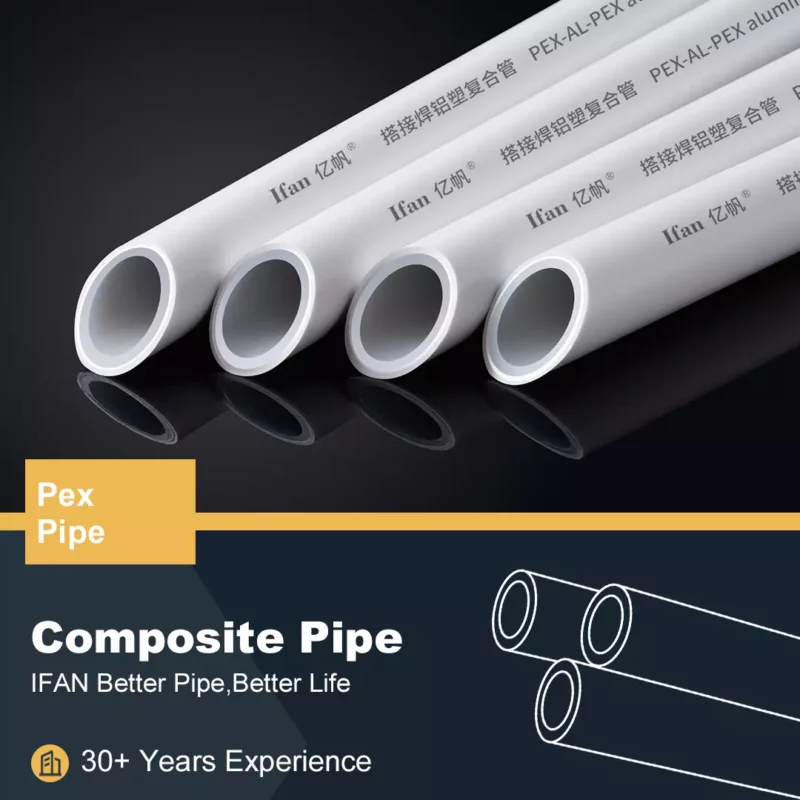








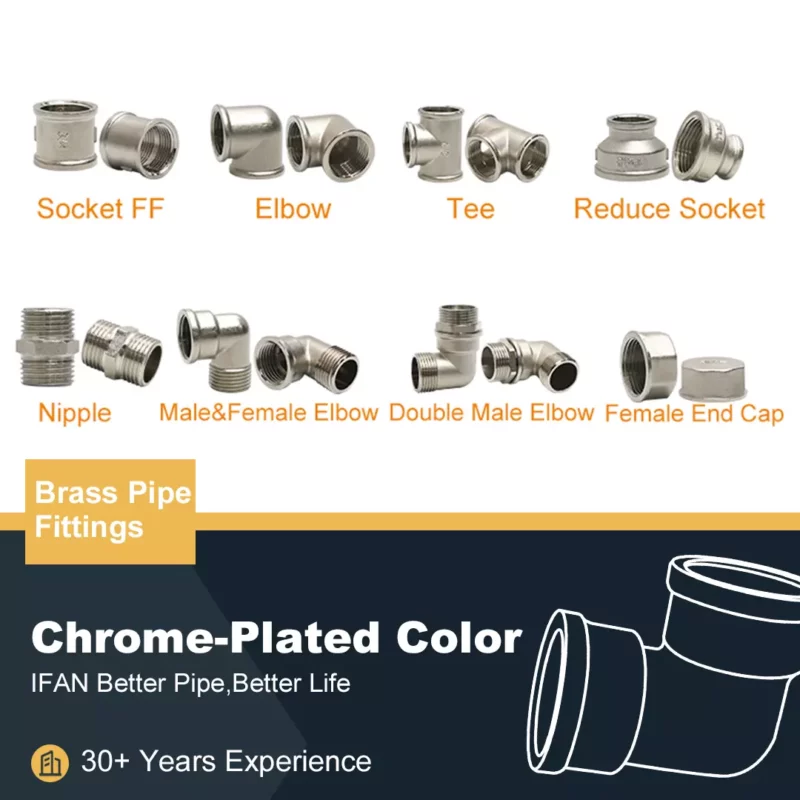
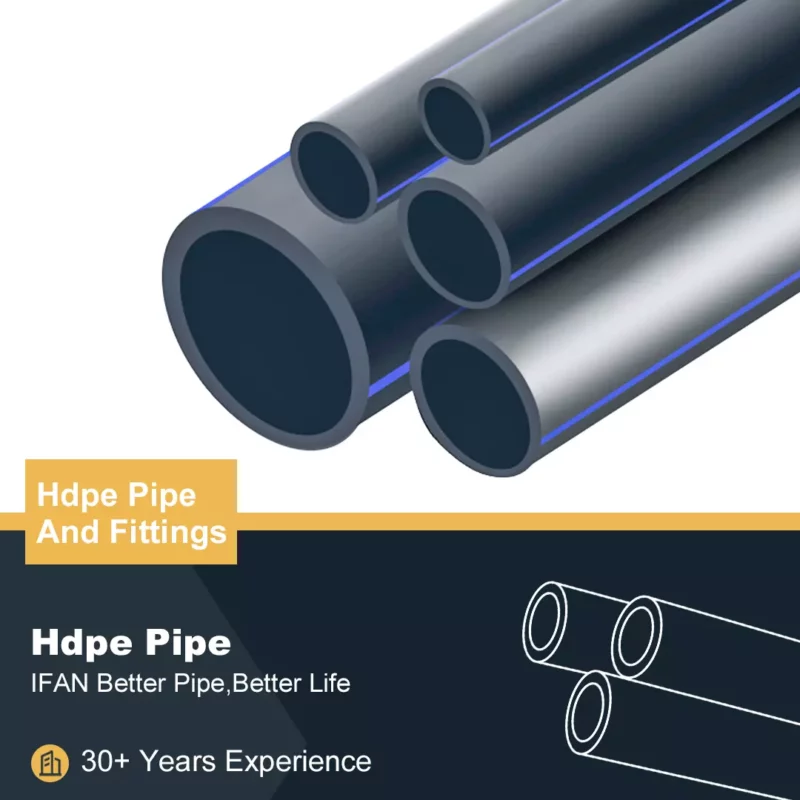




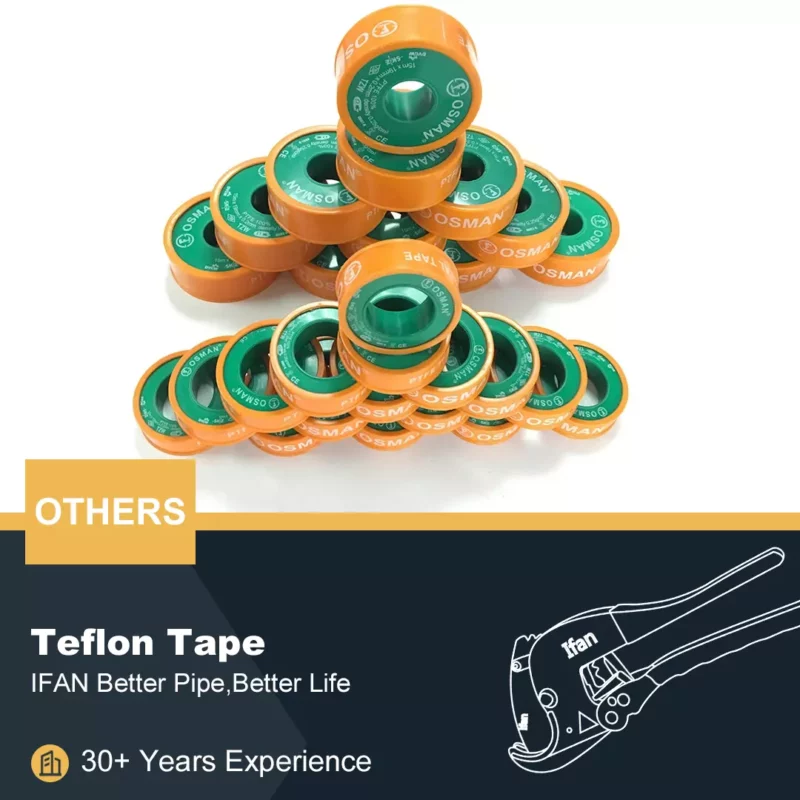











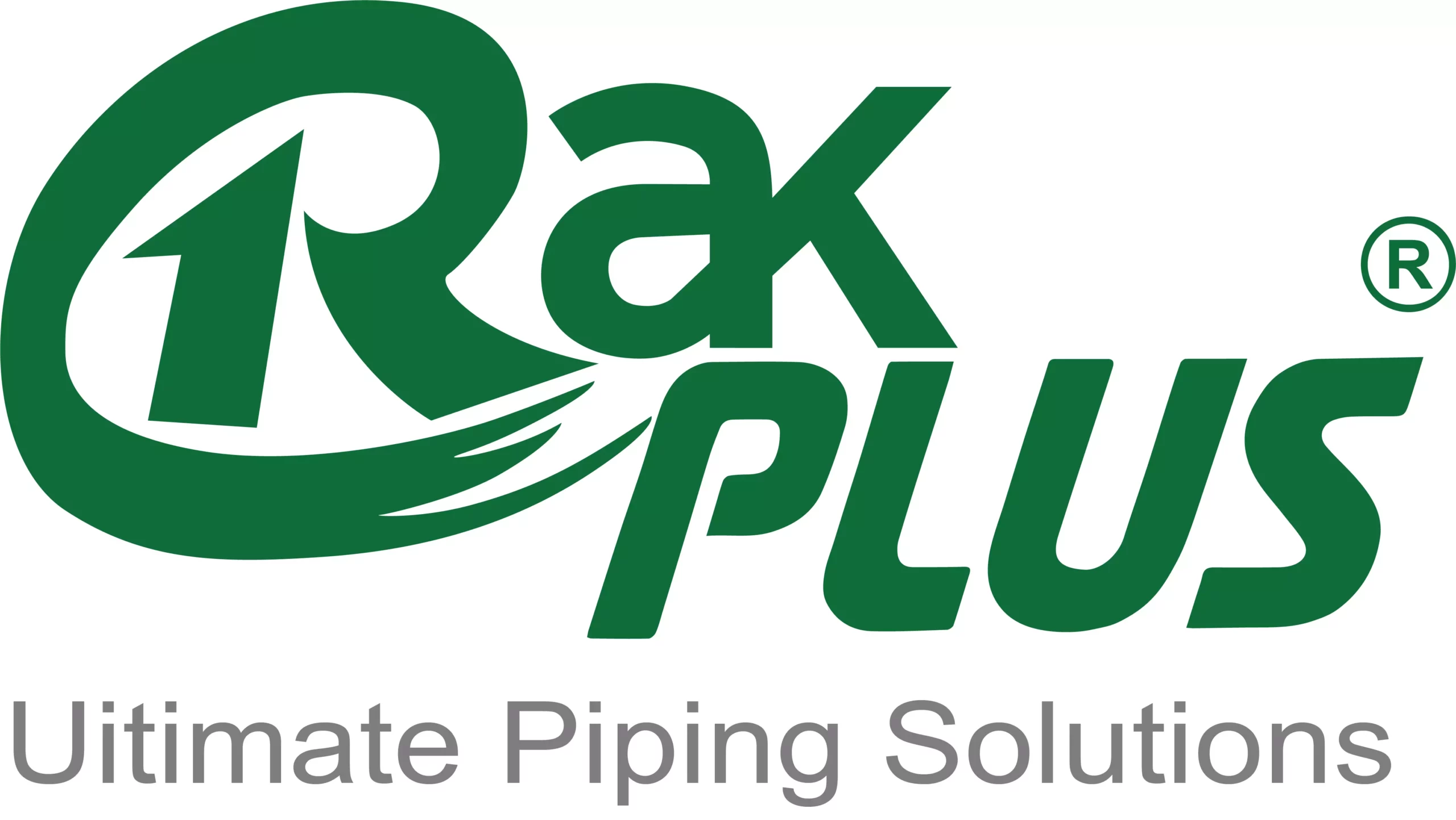


Your point of view caught my eye and was very interesting. Thanks. I have a question for you.